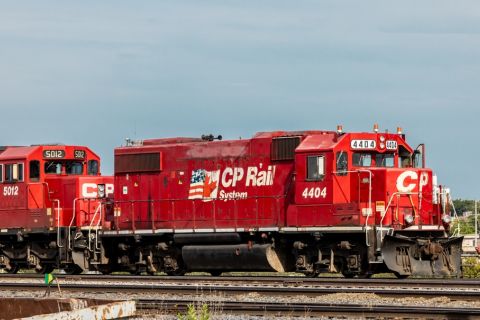Chemical process simulators were first introduced to the market in the late 1970s and early 1980s. Beginning with that original modeling breakthrough, process engineering has undergone significant transformation over the years, catalyzed by advances and innovation in software, both within individual disciplines and also in the integration across the workflow.
This continuous evolution has created tremendous value for many companies, resulting in capital and energy savings, increased safety and reliability and optimized designs with dramatic improvements in engineering quality and productivity.
A common aspect of all these examples is the huge impact cross-discipline integration of modeling tools has on the selection of the best design options, the overall quality of the designs and the safe and profitable operation of process plants. The ability to achieve superior energy and environmental performance while at the same time saving both capital and operating expenses would not be possible without the capability of the models to analyze many alternative solutions rapidly and present design and cost tradeoffs to decision makers. This is critical, as companies across the globe are facing an increasingly interconnected and highly competitive environment.
Optimization opportunity
Process engineering plays a critical role across the entire asset life cycle—during development, design, construction, debottlenecking and operations. At the front end, process engineering decisions determine and constrain the ultimate economics of a facility. In operations, process-engineering decisions solve throughput, yield, regulatory and performance issues. Given their highly varied role, process engineers benefit from interactions with other engineering and operational functions and disciplines on a daily basis. The exchange of ideas, recommendations, designs, analyses, plant data and process models of various kinds support optimizing increasingly complex designs and operations.
By considering a broader range of ideas, companies are able to achieve improved asset performance, reduced costs and increased safety and reliability.
Unfortunately, within many organizations, communication between engineering disciplines and with other functions is manual, sequential and inefficient. Understanding of the current state of the asset and opportunities for improvement are not consistently shared and executed across the groups. Organizational “silos” hold the expertise and data of each individual group and discipline largely within the group, shared with other groups only after a design is released, or on a case-by-case basis when it is important.
This leads to significant loss of opportunities since ideas developed in one group are not fully exploited by other groups. Furthermore, the sequential nature of the interactions between engineering groups limits the screening of multiple alternatives during design and manufacturing and leads to suboptimal choices.
Let's examine the journey of process engineering over the past three decades and the exciting innovations driving its evolution.
The desktop revolution
Following the introduction of chemical-process simulators, first on mainframes and mini computers, the next major price and performance breakthrough was the personal computer. This had a dramatic impact on process-engineering practice. It lowered the barrier-to-entry to automate engineering calculations and democratized the ability to model and analyze an asset through process simulation and modeling. The steady increase of PC power to solve bigger and bigger simulation models quickly moved the simulators from mainframes to each engineer’s PC. The evolving Microsoft Windows user environment spurred an evolution in ease of use of the models with graphical user interfaces, making them more accessible to a broader range of chemical engineers.
This accessibility has enabled process engineers working on plant problems to quickly establish the understanding of the current asset performance and rapidly consider improvement opportunities through modeling of ‘what-if’ scenarios. Expanded access to plant data and to manufacturing and planning tools helps process engineers translate improvement ideas into real benefits for the asset owners.
In parallel, desktop environments also made engineering design, cost estimation and analysis tools widely available and easier to adopt, enabling greater opportunities for idea creation and collaboration across disciplines and ultimately improved performance and increased productivity.
However, we have observed that despite all of these democratizing trends there is still a huge opportunity for all organizations to take advantage of these powerful modeling capabilities. To break through this barrier, we have conducted extensive usability studies and have introduced radically new user interface concepts into several modeling tools and are continuing to do so across the gamut of engineering optimization products.
Of this breakthrough user environment, BP Chemicals’ Dr. Godwin Tongo, process modeling and simulation advisor, reports: “The new paradigm has provided us with a big leap in flexibility and ease of use and to enhance and optimize our engineering productivity.”
Evolution of user interface and workflow paradigms has continued to accelerate, catalyzed by new innovations in software and hardware and mobile environments.
Convergence of approaches
Another related area of improvement involved the convergence of steady-state modeling with dynamic modeling tools and the integration of sequential modeling with equation oriented solution approaches. This has great significance, with the time-consuming efforts to build dynamic models and equation-oriented models for a complex process being overcome through building models first in the steady state mode and then re-using and building on them.
The ability to model processes dynamically is required to address the increasing complexity of safety, start-up and quality challenges in highly optimized, large and integrated process plants, as well as for effective modeling of sequential batch units within process plants. A recent example that demonstrates the power of this approach is the use of dynamic modeling together with relief system analysis tools for more accurate relief load and flare-system analysis resulting in significant savings in capital costs related to processing plant or refinery flaring capacity.
The Web and software evolution has enabled several areas of core chemical-engineering innovation that provide the foundation for process modeling and optimization. Such innovations have been an integral ingredient for achieving optimization benefits. Today we have a large and expanding set of thermo-physical properties accessible with more accuracy to modelers. Consider the example of a close boiling distillation column, which provides a clear picture of the value of better thermo-physical property characterization. A 5% error in vapor liquid equilibrium predictions can result in 100% error in capital cost estimation for the distillation column— a major capital item.
Accurate physical properties, therefore, are a key input parameter for reducing project capital and technical risk.
Availability of physical properties data has always been a challenge in developing a new process or a new equipment design. Innovations in this area continue to accelerate engineering efficiency while improving the accuracy and reliability of model predictions and equipment sizing. New optimization algorithms have continued to expand the scope and impact of process optimization. Improved analysis and visualization tools help engineers understand complex phenomenon, enabling the development of more efficient processes. Continued focus on these innovations will be critical for value creation through process optimization.
Collaboration benefits
In addition to innovations in process engineering, another aspect that is critical for value creation is collaboration among groups and disciplines to consider cost and energy parameters in the designs.
The traditional workflow for conceptual engineering today is sequential. During conceptual engineering, the main objective is to screen multiple design alternatives to ensure that an optimum design has been selected. A process engineer typically develops these alternatives using a process simulation tool. The most promising alternatives are then passed on to equipment, for example, heat exchanger specialists, to size and design the equipment. The equipment specialists develop preliminary equipment designs and pass these to cost estimators.
This sequence of tasks may take several days or even weeks to complete. The sequential nature of the workflow slows the overall process and limits the number of design alternatives that can be evaluated in the short window of opportunity available for conceptual engineering. One consequence is that economics and adequate heat exchanger options are not rigorously considered early enough. The result is sub-optimal designs and lost opportunities— and increased costs.
The accompanying graphic shows the integrated conceptual engineering workflow that is now possible today. The integrated approach provides access to equipment modeling, sizing and economic analysis capabilities inside the simulation environment simultaneously in a manner that a process engineer can use without being a specialist in design and costing.
Savings examples
This integrated approach allows the process engineer to rapidly screen multiple alternatives in a matter of hours instead of days or weeks. This saves 10% to 30% capital and energy compared to the traditional approach due to the ability to screen multiple alternatives rapidly and optimize designs early. BASF believes that its net benefits from the broad use of process simulation, in a comprehensive way, have been between 10% and 30% of installed capital cost of projects.
Dow Chemical has reported savings of $65 million using integrated simulation and equipment modeling. The approach enabled identification of a debottlenecking opportunity in a chemical process while diagnosing and fixing a specific operational problem.
Another newly accessible integrated work flow enables energy analysis directly from within the simulation model, so that promising conceptual options for energy saving can be identified during process design. Energy analysis, combined with equipment and cost analysis, enables process engineers to quickly identify the most promising options within their familiar process simulation user environment.
A significant part of process engineering in operating companies involves supporting manufacturing and supply chain activities to troubleshoot and optimize assets. One of the key challenges is that engineering, manufacturing and supply chain teams do not share a common understanding of the current state of the asset and opportunities for improvements.
Competing silos
As a result, initiatives to improve performance are often developed in silos and, in some cases, compete with each other. The process engineer’s focus is on understanding the process and predicting its performance. However, this is not shared effectively with the stakeholders in manufacturing and supply chain. Communication tends to be adhoc through a variety of mechanisms including emails, Excel spreadsheets, models, drawings and face-to-face meetings, among others. This prevents complete alignment across the key disciplines and, more importantly, results in lost opportunities for the asset owners.
Today, one may reuse a process model of the asset for what if analysis, decision support and optimization of the asset. A process model encapsulates knowledge of the asset and provides the ability to reliably predict asset behavior.
One approach to enable plant personnel to access the models is to use an Excel-based interface to shield model complexity. Another opportunity involves reuse of process modeling information in production planning. This ensures that the production plan is based on accurate information of the current state of the operation and can accurately predict the optimization potential. Another area of innovation is the provision of real time data for viewing and analysis within the process model itself. This provides a “one-stop-shop” for troubleshoot operational issues.
Looking ahead
What are the big opportunities ahead for process engineering?
New innovations will continue to broaden the scope for process optimization through new, more accurate models for physical properties and process equipment, and through new optimization innovations. Further integration will enable process modelers to have better vision in optimizing process schemas against more parameters including economics and sustainable operations.
Current stand-alone design and analysis, such as equipment sizing, detailed equipment design and the like can be expected to be more closely brought into the simulation modeling world. Advanced collaboration within the engineering tools combined with advances in engineering databases will open up opportunities to better integrate global teams.
This journey is already beginning with the breakthrough process modeling search tool recently introduced by AspenTech. New information technology innovations such as social networking, mobile and cloud computing platforms and search technologies will transform process engineering once again.
Breakthroughs here can be expected to increase the access to process modeling tools, reduce the learning barrier and make the optimization choices more visual and transparent. The new Web and cloud innovations will integrate people in addition to facilitating integration of software applications.
Process engineers will play an even more important role in this transformation due to the focus on understanding, modeling and optimization of processes.
Recommended Reading
President: Financial Debt for Mexico's Pemex Totaled $106.8B End of 2023
2024-02-21 - President Andres Manuel Lopez Obrador revealed the debt data in a chart from a presentation on Pemex at a government press conference.
CorEnergy Infrastructure to Reorganize in Pre-packaged Bankruptcy
2024-02-26 - CorEnergy, coming off a January sale of its MoGas and Omega pipeline and gathering systems, filed for bankruptcy protect after reaching an agreement with most of its debtors.
NGL Growth Leads Enterprise Product Partners to Strong Fourth Quarter
2024-02-02 - Enterprise Product Partners executives are still waiting to receive final federal approval to go ahead with the company’s Sea Port Terminal Project.
After Megamerger, Canadian Pacific Kansas City Rail Ends 2023 on High
2024-02-02 - After the historic merger of two railways in April, revenues reached CA$3.8B for fourth-quarter 2023.
Enbridge Advances Expansion of Permian’s Gray Oak Pipeline
2024-02-13 - In its fourth-quarter earnings call, Enbridge also said the Mainline pipeline system tolling agreement is awaiting regulatory approval from a Canadian regulatory agency.




